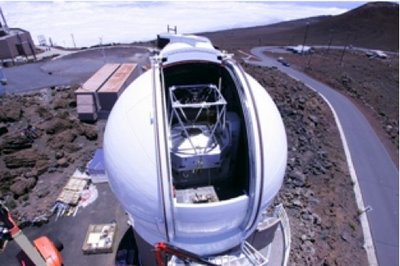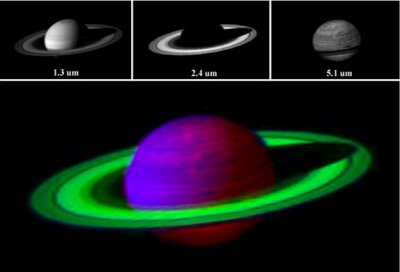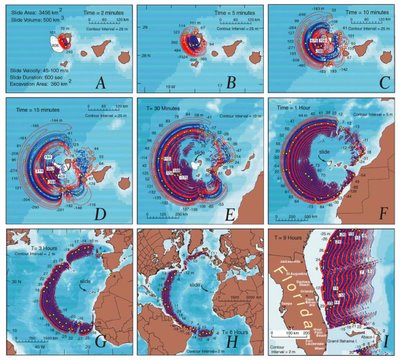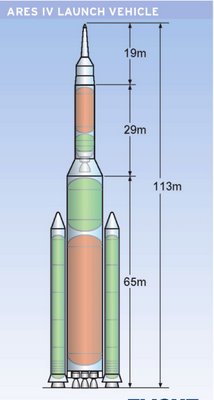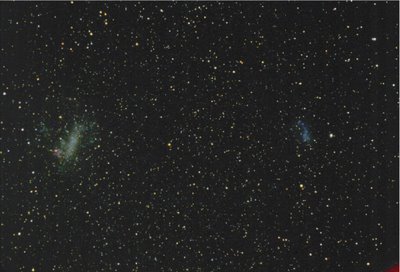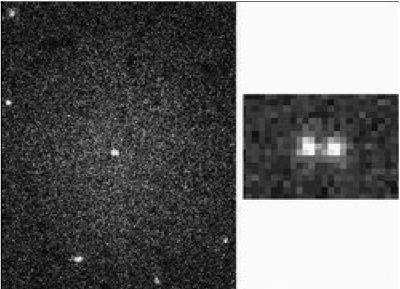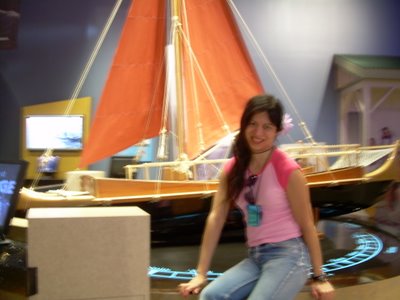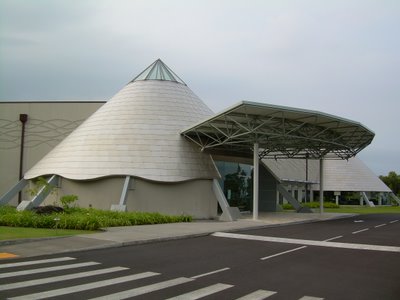
Thanks to Gebar and Kea for hints at putting equations on blogger.
Einstein in 1917 proposed a static universe, spherical with fixed radius. To prevent the sphere from collapsing due to its own gravitation, Einstein added a fudge factor, a cosmological constant. A spherical space would collapse UNLESS it were already expanding. An expanding universe would have been one of the greatest predictions ever, but Einstein rejected the idea.
Alexander Friedmann was born in St. Petersburg in 1888. His mother was a pianist, his father a ballet dancer and composer. While studying physics, he became interested in applications to meteorology. During the First World War, he volunteered to use his knowledge to aid the new tactic of aerial bombing. He flew as an observer on hazardous missions, becoming known to both sides. On days when Russian bombs were on-target, the Germans would mutter "Friedmann is in the air today."
After the war, despite the distraction of the revolution, Friedmann found solutions to Einstein's equations for an expanding Universe. His 1922 paper "On the Curvature of Space" is subtitled "to demonstrate the possibility of a world in which the curvature of space is independent of the three spatial coordinates but does depend on time." R is a multiple of t, R = ct. The universe needed no cosmological constant.
The Belgian priest Georges Lemaitre independently proposed an expanding universe as an explanation for redshifts. At a conference in 1927, he approached Einstein with the idea. The famous scientist could find no flaw with the math, but was uncomfortable with an expanding universe. Einstein had read the 1922 paper and wrongly thought Friedmann had made a mathematical error.
The Friedmann equations work both in units of mass density or energy density. First Friedmann equates kinetic and potential energies on the surface of an expanding sphere:
$\frac12 r^\prime$^2 = GM/r = $4 \pi G$r^2$\rho$(c^2)/3
($r^\prime$/r)^2 = $8 \pi G \rho$(c^2)/3
As we know, mass and energy are equivalent by E = m c^2.
Second we equate acceleration with gravitational attraction:
$r^\prime\prime$ = -GM/(r^2) = $-4 \pi G r \rho$(c^2)/3
$r^\prime\prime$/r = $-4 \pi G \rho$ (c^2)/3
Einstein gave us the field equation for gravitation:
$ R_{uv} - \frac12 g_{uv} R = \kappa T_{uv}$
The stress-energy tensor $T_uv$ (seen above) normally has units of energy density $\rho$(c^2).
We have seen that Einstein can be reduced to a form corresponding to Friedmann:
($r^\prime$/r)^2 - $\frac13 \kappa \rho$(c^2) = 0
($r^\prime\prime$/r) + $\frac16 \kappa \rho$(c^2) = 0
Removing, for a moment, the c^2 from Friedmann, we would have:
$8 \pi G \rho$/3 = $\frac13 \kappa \rho$ (c^2)
$4 \pi G \rho$/3 = $\frac16 \kappa \rho$ (c^2)
To normalise his left-hand with his right-hand sides, Einstein chose $ \kappa = 8 \pi G$/(c^2). This led to decades of misconception that Relativity requires a fixed c. Some "geometrized" unit systems give $ \kappa = 8 \pi G$/(c^4), which is too convoluted to describe. Since T_uv has units of energy density, we must use the same for Friedmann:
$8 \pi G \rho$(c^2)/3 = $\frac13 \kappa \rho$(c^2)
$4 \pi G \rho$(c^2)/3 = $\frac16 \kappa \rho$(c^2)
$\kappa = 8 \pi G$
This is very trivial. In earlier posts I've left out the (c^2) on both sides because it simply cancels out.
Now the Einstein equation is $ R_{uv} - \frac12 g_{uv} R = 8 \pi G T_{uv}$. The Bianchi identities become:
$\bigtriangledown {u} ( R_uv - \frac12 g_uv R ) = 0$
$8 \pi G \bigtriangledown {u} (T_uv) = 0$
The world is much simpler without that pesky (c^2) factor.
Finally, the Einstein-Hilbert action becomes:
$S = \int (16 \pi G R + L_m)$d^4(x)
Thus we can do everything General Relativity can without a fixed c. Some problems, like the deflection of bodies by the Sun, work even better with a varying c.
During the 1920's Edwin Hubble and Milton Humason used Cepheid Variables to show that the Universe expanded. In a 1931 visit to Mount Wilson, Einstein conferred with Hubble and peered through the telescope. Einstein dropped the cosmological constant, later calling it his "greatest blunder." He became one of Lemaitre's biggest supporters. If Einstein says the CC is a blunder it probably is a blunder.
Unfortunately, Friedmann had died in 1925 at the age of 37. He had continued his interests in weather and flying. After attempting a record-setting balloon flight, he contacted a fever. Inventing a Theory that makes real predictions (light is slowing down) runs the risk of being proved wrong. At first, even a great man like Einstein may think you have made an error. Whether challenging the air or contradicting Einstein, Alexander Friedmann was not afraid of taking risks.

